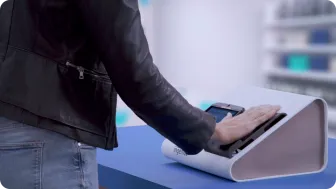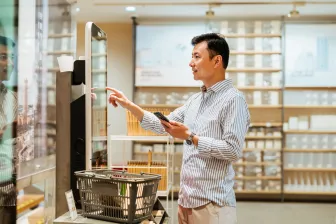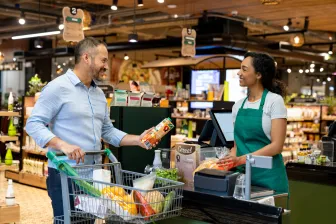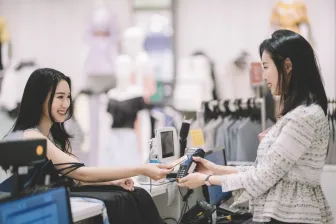Creating Frictionless Payment Experiences with Biometric Payments
Listen to this article
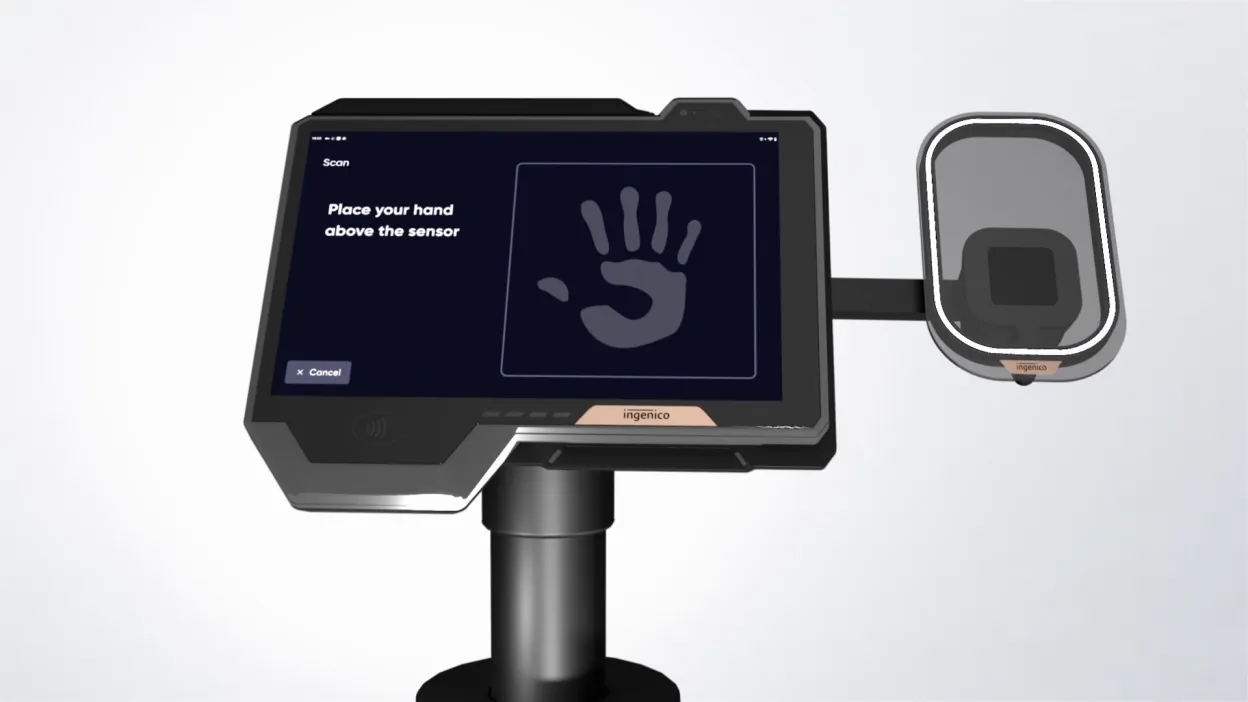
Creating frictionless payment experiences has several benefits for merchants. It elevates checkout experiences with speed, ease, and convenience, which can increase customer satisfaction and loyalty, and it can also lead to higher spend. Although merchants have tried various ways to make payments quick and simple, biometric payments have the potential to create the ultimate frictionless payment experiences.
Which Biometric Payment Option Is Best?
Consumers use various biometric methods to authenticate their identities. Data from the 2024 Consumer Trust in Biometrics Report from solutions provider Aware found that 50% of consumers regularly use biometric authentication for mobile apps. Identity verification on mobile devices commonly involves a fingerprint or facial scan. However, translating these technologies to payments creates challenges. Fingerprints require touching a scanner’s surface, which can lead to an accumulation of dirt or oil that can distort subsequent scans. Furthermore, fingerprints can change with age or injury, which could stand in the way of payment authorization. Facial scans don’t require contact; however, adoption may be limited. Ingenico research has revealed that even though consumers are comfortable with facial scans unlocking a phone or mobile app, this technology seems too intrusive for use in public places to make payments.
Palm vein scans have emerged as the leading biometric payment option. Palm vein authentication uses near-infrared (NIR) technology to create a digital map of the vein patterns in a consumer’s palm. The pattern is unique to each person, and it never changes. Touchless payments via palm vein scan also put consumers in complete control. Facial scans, for example, could capture payment as soon as a customer walks up to a scanner at the checkout or an unattended device. With palm vein payments, consumers only pay if they open their hands for a scan. This allows them to retain their choice of payment methods, using cash, a payment card, or other form of payment when they prefer.
How to Accept Biometric Payments
Enterprise retailers or acquiring banks who choose to process biometric payments must enroll customers in the program. In the case of palm vein payments, a customer agrees to terms and allows the solution powering the program to take an NIR palm vein scan. The scan is encrypted, tokenized, and linked to the customer’s payment card or payment account. Once consumers create accounts, they could, in the near future, use them at any location the retailer or bank supports.
When biometric payments are enabled by flexible Android-based payment solutions, merchants can enhance payments with integrated loyalty rewards, digital receipts, and personalized offers to create optimal customer experiences with Android terminals.
The Benefit of a More Secure Business
Biometric payments can enhance customer experiences, and, in turn, contribute to growing businesses. However, this form of alternative payments can benefit merchants in another important way: decreasing fraud and losses. Fraudsters have found ways around payment industry safeguards, for example, using stolen payment cards or using chargebacks illegitimately. Fraud accounted for $429 billion for retailers around the world in 2023.
Biometric payments can help to decrease that number. Palm vein scans are very difficult to counterfeit, assuring merchants that the person making the payment is the person who authorized funds from the account linked to the palm vein scan. Biometric payments will also make some chargebacks more difficult. It won’t be possible to assert that the accountholder didn’t make or authorize the payment. With biometric payments, the merchant has the assurance that the customer’s identity is authenticated.
The Future Looks Bright for Paying with the Wave of Your Hand
Industry analysts predict biometric payments growth in the near future. SNS Insider reports the biometric payment market will reach $34.8 billion by 2032, up from $8.6 billion in 2023. Specifically regarding palm vein payments, Global Market Insights expects the palm vein payments market to grow from $68.4 million in 2024 at a phenomenal 26.1% compound annual growth rate (CAGR) from 2025 to 2034. That would put the market value at more than a half billion dollars at the end of the period.
Ingenico is seeing evidence that aligns with these growth predictions, with pilots in Latin America and Uruguay checking all the boxes for customer-pleasing, frictionless payment experiences. After all, customers don’t need to carry a wallet or even a smartphone to pay, and merchants authenticate account holder identity easily and securely. The response has been positive when customers can pay by merely scanning their hands.
To learn more about biometric payments or how Ingenico is bringing palm vein payments to market to enhance consumer and merchant experiences, contact us.

